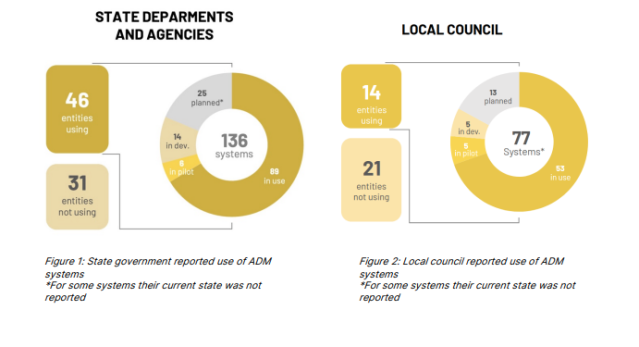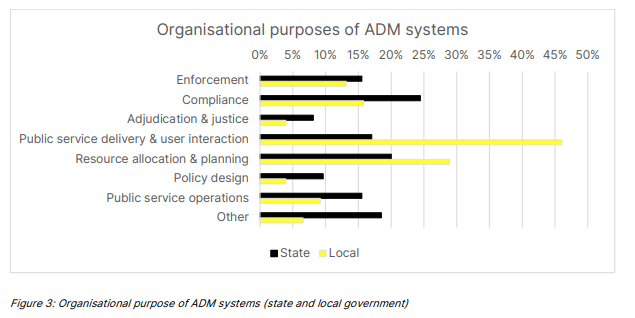
Local councils are increasingly making use of unregulated AI and automation technology, a new report says.
An analysis by the ARC Centre of Excellence for Automated Decision Making and Society released this month says automated decision making (ADM) is widespread and increasing in NSW, across both state and local government.
The NSW Ombudsman initiated the project to map and analyse ADM in NSW in response to a lack of visibility around how and when the technology is being used.
The survey found the use of sensors and computer vision analysis is widespread among local councils, but not so widely publicised.
Local council use of such technologies is occurring in the absence of a specific, legislative framework, published strategies or guidance for the use of these potentially sensitive technologies.
ARC Centre of Excellence for Automated Decision Making and Society
The technology is being used for a range of purposes, including licence plate recognition in parking lots, analysing how public facilities and being used and managing urban heat.
“Multiple local councils are using computer vision and image analysis for a range of purposes: parking management; ‘people counting’; detecting road defects; maintenance needs and schedules through assessing conditions and levels of use of public infrastructure, and more,” the report says.
Privacy implications
However, while many of these uses have a public interest, they also come with surveillance and privacy implications.
“It is particularly notable that local council use of such technologies is occurring in the absence of a specific, legislative framework, published strategies or guidance for the use of these potentially sensitive technologies,” the report warns.
“Such use is not subject to the NSW AI Assurance Framework which applies to state government uses.”
It also notes there’s no specific obligation for state or local governments to report their use of the ADM, which has implications for accountability and integrity oversight.

Use of automation expanding
The survey focused on fully or partially automated technical systems that are being used in administrative decision making, and that affect citizens.
“Responses to our survey confirm that use of ADM systems is widespread across NSW government departments, agencies and local councils, varied in function and technology, and actively expanding,” the report says.
Fourteen of the 35 councils that responded to the survey reported a total of 77 ADM systems performing a range of purposes, with 23 of those planned, in development or being piloted.
Use of ADM systems was more likely in metropolitan and city councils, and no concrete ADM systems were reported in rural councils.
Meanwhile 77 NSW government departments and agencies reported 136 ADM systems, a third of which were at the time of the survey planned, in development or being piloted.
The report found ADM systems are being used differently by state and local governments, with councils mainly using them for delivering services, interacting with the public, and allocation of resources.
The use of ADM by the state tended to have more of an emphasis on compliance, for example the use of automated cameras and analytics to automate the detection of road rule breaches.

Examples of council uses of automated decision making
- Automated detection of parking infringements
- Automated issue of planning certificates
- Inbound email triage and sorting
- Assessing eligibility criteria for venue bookings
- Assessing eligibility for grants
- A chatbot to help the public find council information
- Identifying road defects
- Flood and evacuation modelling
- Collecting information on beach dune regression, urban heat, road usage, water consumption and dam levels
The report says about a third of all the systems reported were in development, being piloted or planned within the next three years, which indicates a rapid acceleration in take up of the technology.
State government departments and agencies alone reported a potential increase of 50 per cent in the number of ADM systems in the next three years.
The extent of existing and planned use of ADM systems by local councils is also “striking”, the report says, and deserves the attention of researchers and policymakers.
Comment below to have your say on this story.
If you have a news story or tip-off, get in touch at editorial@governmentnews.com.au.
Sign up to the Government News newsletter